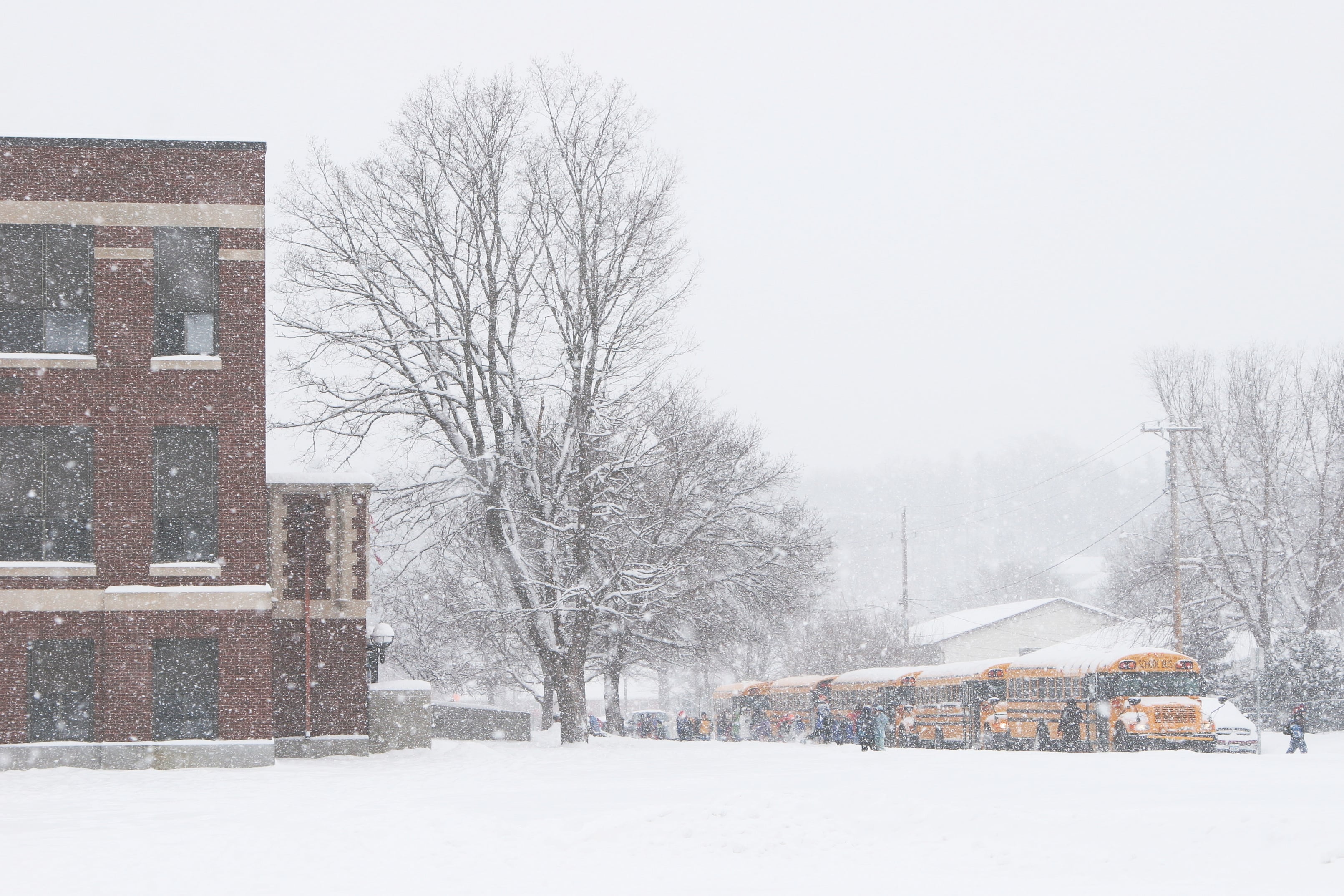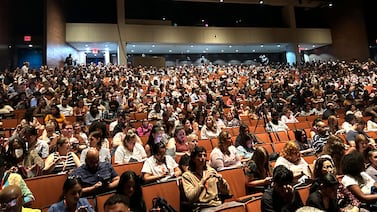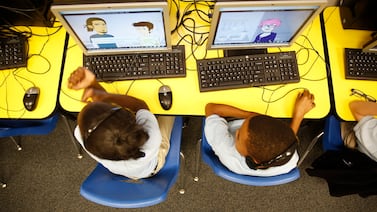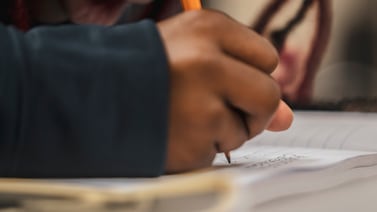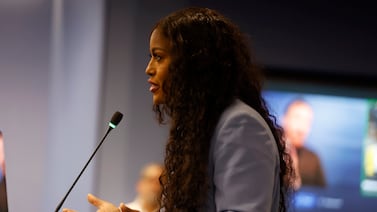It’s been a mild winter so far in southern Michigan, but already Reading Community Schools near the Ohio border is nearly out of snow days.
The district isn’t alone.
It’s not yet February, and many districts are nearing state caps on the number of days they are allowed to close for emergencies. In addition to snow days, there have been pandemic-related closures, attendance challenges and threats of school violence. Administrators want more flexibility, but the state Legislature doesn’t appear willing to grant it.
That jeopardizes school funding and districts’ ability to end the year on time in early June when many teachers and families have plans to start vacations and summer camps.
Michigan’s pupil accounting rules allow six school closures per year, known as “forgiven days.” They’re most often used for snow, but this is an unusual school year of staff shortages, COVID outbreaks, and copycat threats that followed the deadly November shooting at Oxford High School. Those factors are forcing school closures that are rapidly draining districts’ pool of forgiven days.
The 750-student Reading school district has had to close three times because of threats of school violence, once because of a citywide problem with water pressure, and once because of icy roads.
The Detroit Public Schools Community District has used all six of its forgiven days for health and safety reasons, administrators said.
On the snowier west side of the state, Newaygo Public Schools, about 35 miles north of Grand Rapids, already exceeded nine days. The district used five days for weather-related closings, plus 4½ more for “a variety of reasons” including staff shortages, Superintendent Jeff Wright said.
Administrators around the state have been asking the Legislature for more flexibility but so far their efforts have gained less traction than a school bus on an icy hill.
Fewer days versus long year
The closures come at a time schools already are trying to make up for lost learning time earlier in the pandemic when many schools closed or moved hastily to remote learning before teachers and students had the resources to get online. That has sparked some pushback to the notion of allowing fewer days of schooling, as opposed to extending the school year a few days or weeks into June.
“So many kids for the past couple of years have gotten nowhere near the [state-required] 180 days of learning so it’s even more important now to make sure they get as much as possible. We’ve got a two-year deficit we keep adding onto,” said Lou Glazer, president of Michigan Future, an Ann Arbor-based nonpartisan think tank focused on education’s role in bolstering the state economy.
Districts that deplete their six forgiven days can ask the Michigan Department of Education for three more, but some administrators are concerned even that won’t be enough to cover unforeseen challenges in the months ahead.
“With so many disruptions this year, I don’t know if three days is going to make that much of a difference,” Reading Superintendent Chuck North said.
Unless the Legislature acts, districts will have to cut short spring breaks or extend school calendars by the number of days they’ve closed beyond their allotment of forgiven days.
So far, only three districts — Ludington, Muskegon and Newaygo — have applied for additional forgiven days, but it’s still early in the year, said MDE spokesman Martin Ackley. More applications are expected. The department is likely to approve them, but can only allow three additional days (for a total of nine) unless the Legislature provides more flexibility.
Cedar Springs Public Schools, 20 miles north of Grand Rapids, hasn’t applied for additional forgiven days although the district has used all six allowed days — two days each for bad weather, power outages and high teacher and student absences. Superintendent Scott Smith said he will extend the school year if necessary to meet the state-required 180 days and 1,098 hours of instruction.
“This does not keep me up at night. We’ve got provisions and we’ve got a plan … so to me this is really not a big challenge,” Smith said.
“It can be a little bit of a bump for some families who’ve scheduled vacation or some staff who’ve scheduled vacation, but you figure it out and make it work,” he said. “It’s a human business. You’ve got to be flexible.”
Extending the school year has a price
Extending the year could be costly and would require districts to renegotiate with local labor unions.
But money shouldn’t stop schools from doing what’s best for kids, especially in a year of historic school funding, Glazer said.
“If the only reason not to extend the school year is that it costs too much, then they ought to be able to figure that out,” he said.
For superintendents in northern Michigan, that isn’t the only reason. They face extra pressure from the tourism industry, in which businesses would suffer if school calendars are lengthened. They depend on long summers when families can visit and teenage workers can staff their shops and restaurants.
There’s another option, Glazer said. If it’s too unsafe to open school buildings, classes could be moved online, he said.
“It’s not perfect. A lot of homes have trouble getting Internet, but we’re far better off today than we were two years ago,” he said.
That could be a tough sell for lawmakers like Rep. Pamela Hornberger, who has staked out a firm position against remote learning. As chairperson of the Education Committee, the Chester Township Republican controls the House education agenda.
The worst thing the Legislature could do, Glazer said, is hand out extra forgiven days that would stop formal learning entirely.
“With all the disruption in kids’ lives because of COVID, why take additional school days away from them?” he asked. “We really need to figure out how to get as many learning days as possible. That’s particularly important for non-affluent children.”
Unprecedented disruptions caused by the pandemic have put districts in a vise.
There are financial penalties when district attendance falls below 75%. The amount is determined by a complex formula. For example, a district with 2,000 students and a state funding level of $600,000 per day would lose $56,000 on a day attendance fell to 68%, according to the formula.
In essence, schools stand to lose state funding if they open classrooms with attendance under 75%, while school costs (gas for buses, heating bills, and staff salaries) remain the same on those days.
“These penalties end up harming the very students we strive to educate and support. A loss of funding clearly takes away much-needed resources for students,” said Nikolai Vitti, superintendent of the Detroit school system.
Attendance rules challenge district
Superintendents face a difficult choice when surging COVID cases portend high absences. Some open school doors anyway and take the funding hit. Others close and use a forgiven day, hoping they won’t run out and later have to extend the school year further into June.
Attendance rules are less stringent when school years are extended, requiring only 60% attendance for districts to receive full funding on days after the originally scheduled end of the year.
Superintendents like Smith in Cedar Springs are willing to sacrifice funding to provide consistency for students who are able to attend.
“Let’s say we have only 68% in attendance. We’ll lose a fraction of the funding for that day but at least we can have a meaningful day for 68% of the students. It’s about what you can do, not what you can’t do,” he said from his 3,500-student district. “Let’s do what we can for those who are there, and catch the others up later.”
Petoskey Superintendent Chris Parker is similarly minded.
“To the degree schools are open, it’s better for kids,” Parker said. “If only 70% attend, at least that 70% gets the in-person instruction, social interaction, access to guidance counselors, and nutritious school lunches they need … but it’s going to reach a point where you can’t afford to do that,” he said.
“It’s great to say you’ll give up the money, but if you’re running a district without your full foundation allowance, the (local) board of education isn’t going to be fond of that.”
It isn’t clear whether school districts can make up for those funding losses using federal COVID-relief funds. Some superintendents said it’s possible but others believe that money must be spent in accordance with grant applications they already submitted.
Lowering the 75% threshold would be a big help, said Jennifer Smith, head of government affairs for the Michigan Association of School Boards, but so far the state House of Representatives has been unwilling to consider it. Other groups, including the Michigan Association of Secondary School Principals, also are asking the Legislature for relief from attendance requirements during the pandemic. So far, the Senate has taken a step in that direction but the House Education Committee has not budged.
The Senate bill would prevent districts from being penalized in limited circumstances when low attendance is caused by pandemic-related quarantines.
The school board association says that bill isn’t enough, but the House hasn’t been willing to go even that far.
Hornberger, the House education chair, did not respond to repeated requests for comment.
Other House Republicans, though, have resisted attempts to provide any flexibility they believe could encourage districts to return to remote learning or could make it easier for school buildings to close.
“I don’t understand that argument. The insinuation is that superintendents don’t want what’s best for their kids,” said Kevin Polston, superintendent of Kentwood Public Schools, a 9,500-student district south of Grand Rapids. “We know in-person instruction is what’s best for most kids, and the districts across the state have been committed to offering that for our students and families, but safety is always going to be first for us.”
Kentwood used two forgiven days so far this year on consecutive days because of snow, Polston said. When school resumed that Friday, only 71% of students showed up so the district won’t get its full share of state funding for that day unless the Legislature agrees to a rule change.
“Schools that are in person for every kid and doing the best they can shouldn’t be penalized during a pandemic,” Polston said.
The free-market Mackinac Center for Public Policy, which has staunchly advocated for in-person learning, hasn’t taken an official position on the Senate bill but encourages the Legislature to reconsider attendance rules for quarantined students. The organization wants to discourage districts from temporarily switching entirely to remote instruction, as schools in Detroit and Ann Arbor recently did.
“Schools should be given greater flexibility not to excuse them from filling their responsibility, but to better equip them to provide students with effective instruction. That means guaranteeing all students access to an in-person option, as well as giving schools latitude,” said Ben DeGrow, the center’s director of education policy.
Gov. Gretchen Whitmer is working with Republican legislative leaders on ways to encourage in-person learning and is expected to offer proposals in her budget proposal next month. Bobby Leddy, spokesperson for the Democratic governor, would not say whether those solutions include flexibility on attendance rules and forgiven days.
“Right now 98% of districts have their classrooms open, and we are working to get that to 100% at soon as possible,” Leddy said.
Detroit superintendent proposes solutions.
Schools that have temporarily moved online are in a bind, Vitti said from Detroit, where students have been remote since December. Attendance is challenging on remote days when younger students might not have enough support at home, and older ones might have too many distractions.
On four days in January, Detroit’s attendance dipped below 75%, including once as low as 59%. The highest attendance in January was 78%.
Before going remote in December, Detroit schools closed several times because of building and city infrastructure problems, threats of school violence, and increases in COVID positivity rates. When schools reopen to in-class learning, Vitti said he expects to add five minutes to the school day to help meet the 1,098-hour school year requirement.
“We have felt the impact more than other districts regarding COVID because of the infection rate and because of low vaccination rates,” Vitti said. “I know other districts are in a similar situation, which is why we need some flexibility moving forward.”
Vitti suggests lowering attendance minimums to 60% and eliminating or reducing financial penalties in certain circumstances, such as during extreme weather, high COVID transmission rates, or critical infrastructure failure. The Legislature also could allow districts to close in response to threats of violence without using a forgiven day, he said.
Jennifer Smith of the state school board association said parents can do their part to pressure lawmakers to take action now so districts can plan for the spring, but she isn’t optimistic that they will.
“I don’t think parents will fully understand until we start talking about having to go to school in June,” she said.
“There needs to be an understanding from the Legislature that this is affecting their constituents, and something needs to be done. It doesn’t have to be drastic. It needs to be flexible,” she said.

